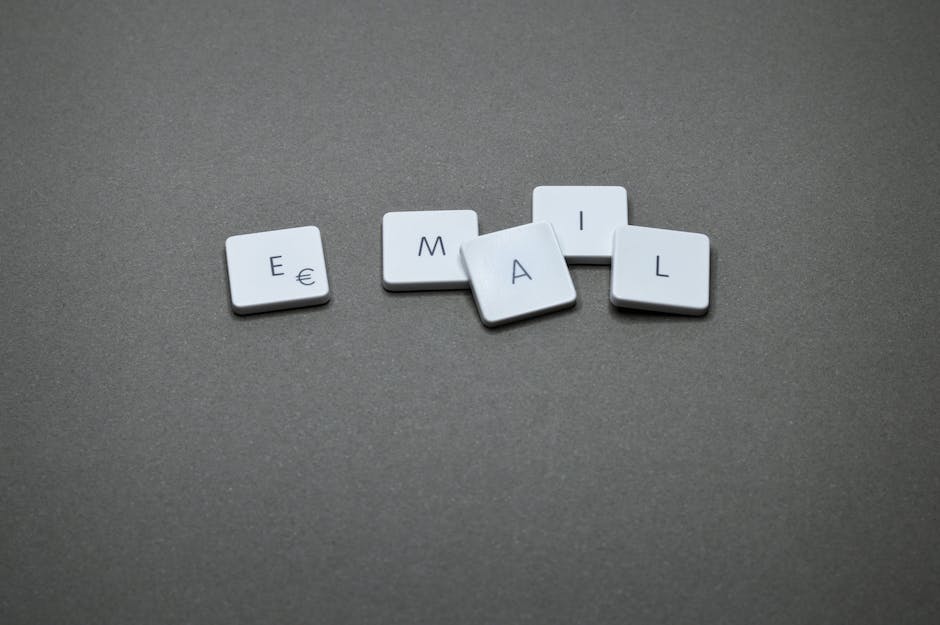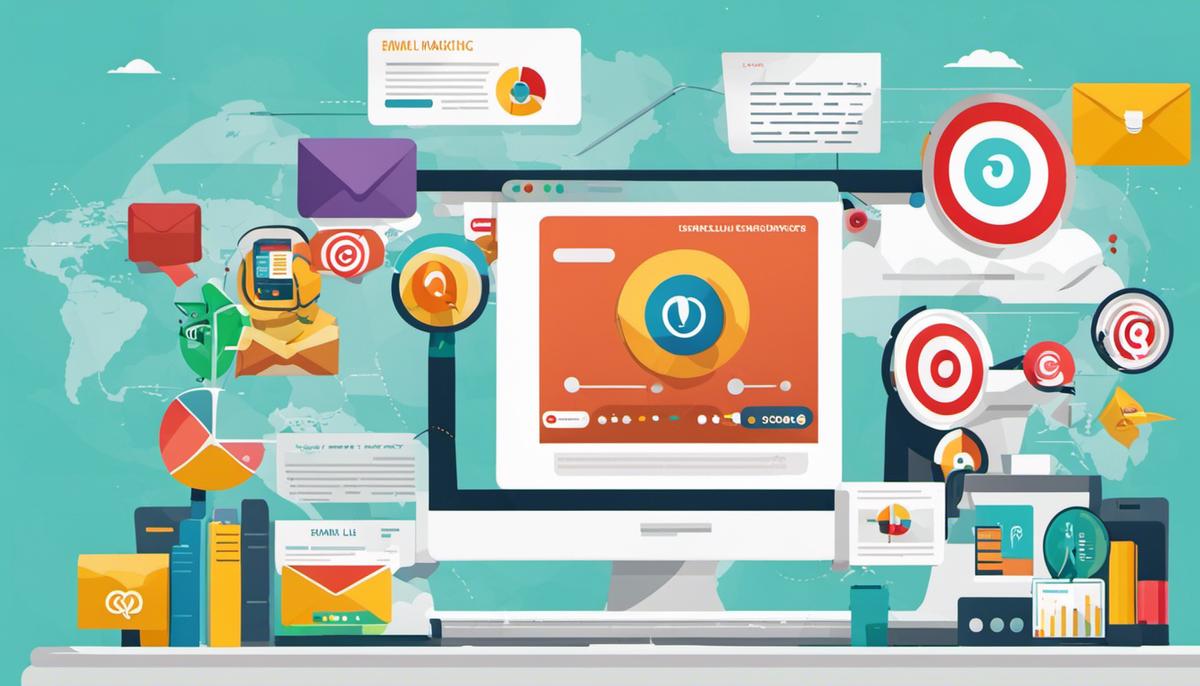Planning Your Email Marketing Campaign.
In today’s digital age, effective communication is highly vital for any business striving to maintain active engagement with their existing customers and attracting potential ones. With the continuous turning of the world towards online platforms, exploring the potential of email marketing campaigns is no longer an option but a necessity. This grand opportunity keeps businesses relevant by engaging recipients directly in their personal space. Email marketing, when done right, can be one of the most powerful tools in your marketing arsenal. Hence, this body of work will embark on the journey of explaining email marketing, from understanding its essence, planning, implementing, monitoring, to adhering to its legalities and ethics.
Understanding Email Marketing
Understanding Email Marketing
Email marketing refers to the process of sending a commercial message, typically to a group of people, using email. It is an effective digital marketing strategy that involves sending emails to prospects and customers to cultivate relationships and promote products or services. When done correctly, every email sent to potential or current customers can be considered as email marketing.
Importance of Email Marketing
In the digital age, email marketing is a staple component of successful marketing strategies for businesses of all sizes and shapes. Whether it’s a startup trying to get its foot in the door or a seasoned corporate giant seeking to retain its market dominance, utilizing email marketing correctly is pivotal for achieving business growth and success. This marketing strategy allows businesses to connect directly with their audience in a highly personalized way, fostering stronger customer relationships and driving sales.
Email Marketing: Advantages over Other Strategies
One prime advantage of email marketing over other strategies is its cost-effectiveness. Unlike television, radio, or print advertising, email marketing does not require a large budget for production or distribution. It’s also highly targeted, meaning companies can tailor their messages to specific segments of their customer base, leading to more effective communication and better results.
Email marketing also provides a clear return on investment (ROI) that is easier to measure than most marketing strategies. Marketers can track the exact number of people who are opening, reading, and clicking through their emails, leading to a clearer understanding of the campaign’s success.
Furthermore, it provides immediate communication that can be accessed on any device at any time, allowing businesses to send timely messages to their customers.
Effective Email Marketing Campaigns: Real World Examples
Email marketing campaigns have been a game changer for a plethora of businesses all around the world. Take BuzzFeed, the internet media giant, for instance. They’ve won their readers’ hearts with emails that are as engaging and catchy as their content, creating high click-through rates.
Next up is Uber, the ride-sharing app that relies strongly on email marketing to keep in touch with its users. The secret to their success? Crafting short, sharp, and effective messages. On top of that, their offers and updates are customized based on the user’s habits and preferences, resulting in high levels of engagement.
Airbnb, known for revolutionizing the vacation rental industry, also harnesses the power of email marketing. They send personalized recommendations for lodging and experiences tailored to the user’s browsing history and past trips.
These shining examples demonstrate the magnitude of potential in a well-devised email marketing campaign. They stress the importance of making emails personalized, engaging, and rich in content that strikes a chord with the target audience.

Planning Your Email Marketing Campaign
Getting to Know Your Target Market
Before you launch your email marketing campaign, it’s essential to clearly define your target audience. You should understand who will get your emails and how to shape them in a way that resonates with your recipients. To do this, consider various demographic details such as age, location, income, interests, and purchasing patterns. Tools like Facebook or Google Analytics serve as great resources for gathering such information about your potential audience, ultimately helping you refine your email marketing content.
Identifying the Goal of Your Campaign
The next step is identifying the goal of your email marketing campaign. Each campaign should have a specific goal. This could be increasing brand awareness, launching a new product or service, nurturing leads, boosting sales, or customer retention. Your goal will guide the email campaign strategy including the call-to-actions, content, and design.
Creating a Mailing List
After defining your audience and your email marketing goal, the next step is to create a mailing list. This is a list of email addresses to which you’ll send your marketing email. There are various strategies for building a mailing list such as offering exclusive content or discounts for subscribers, using pop-up forms on your website to collect emails, or running social media campaigns to attract new subscribers. It’s also important to ensure your list is GDPR compliant, meaning users have actively agreed to receive emails from you.
Developing an Engaging Content Strategy
Once you have your mailing list, it’s time to develop an appealing content strategy. This involves creating engaging email content that resonates with your target audience and aligns with your campaign goals. Some types of content you might include in your emails are product updates, newsletters, special offers, educational content related to your product or industry, and personal stories about your company.
The content should be consistent with your brand voice and provide value to the reader. Use catchy subject lines to draw your audience in and make sure your emails are visually appealing with images, gifs, or videos. Use clear call-to-actions (CTAs) that align with your campaign goals and encourage engagement.
Monitoring and Optimizing Your Campaign
Lastly, after launching your email marketing campaign, it’s crucial to monitor and optimize your campaign based on data. Tools like Google Analytics and various email marketing software allow you to track key metrics such as open rates, click-through rates, conversion rates, and unsubscribe rates. Using this data, you can tweak and optimize your emails to improve their performance. For instance, you may discover that emails sent on certain days or times perform better, or that certain types of content get more engagement.
To optimize the success of your email marketing campaign, you must keep in mind both your target audience and your campaign goals. Your email content should be designed with precision and creativity, while also being data-driven and open to feedback-driven adjustments. This approach helps you introduce more relevant and engaging content for your audiences, thereby maximizing the effectiveness of your campaigns.

Implementing Your Marketing Campaign
Implementing Mailing List Segmentation
An essential part of this success is the strategic segmentation of your mailing list. This process involves the division of your subscribers into more defined groups which could be based on various factors including but not limited to purchase behavior, geographic location, demographic details, and engagement patterns. This enables you to personalize your communication and send group-specific messages which are far more relevant and engaging compared to generic, one-size-fits-all emails. Such targeted email campaigns are proven to have higher user engagement, conversion rates, and customer retention as opposed to non-segmented email initiatives.
Personalizing Your Emails
To connect with your audience and stand out in inbox clutter, personalizing your emails is the key. This process involves more than just addressing the recipient by their name. Incorporate real-time data to create content that aligns with your audience’s needs, preferences, and behavior. Simple personalization methods include using the recipient’s location, mentioning their previous interactions with your business, and tailoring the email content based on their interests or preferences. More advanced personalization strategies can be driven through machine learning algorithms to deliver highly dynamic and personalized content.
Scheduling Your Emails
Finding the right time to send your emails has a significant impact on your email marketing success. You should aim for the time when your recipients are most likely to read your mail. This requires an understanding of your audience’s behavior and may vary depending on your industry, and even the days of the week. Generally, research suggests that the best days to send emails are Tuesday, Wednesday, and Thursday, and the best times are around 10 AM and 8 PM. However, the optimal time could differ for each business, and it’s recommended to test different sending times to identify when your audience is most engaged.
Constructing Persuasive and Engaging Email Messaging
For an email marketing campaign to achieve its desired success, the primary crux always lies in the crafting of high-quality email content. To effectively resonate with recipients, the content should not only be comprehensible but brief and exciting as well. An effective email contains an intriguing subject line, a personalized salutation, information-rich yet relevant content, a straightforward call-to-action (CTA), and a succinct sign-off. Though visual additions like images and infographics can enhance the overall attractiveness of your emails, you must counter balance them appropriately with text to ensure clear communication. Equally important is ensuring mobile optimization for your content, considering a significant proportion of your audience will likely access your emails via their smartphones.

Monitoring and Improving Your Campaign
Assessing the Success of Email Marketing Campaigns
Upon launching your email marketing campaign, one vital step is to continuously supervise its performance. This includes exploring, assessing and studying key metrics that provide insights into the reach and effectiveness of your campaign. The primary objective of this process is to learn about the tendencies and preferences of your subscribers. Armed with these insights, you can refine your strategy for increased success.
Email Marketing Tools
There are several email marketing tools you can use to track the performance of your campaigns. For instance, platforms like MailChimp, SendinBlue, GetResponse, and Hubspot offer comprehensive performance tracking features. These tools provide detailed reports related to email deliverability, open rates, click-through rates, bounces, and unsubscribes. By monitoring these metrics, businesses can get an insight into campaign effectiveness and audience engagement.
Understanding Email Marketing Metrics
To be able to interpret and use data from these tools effectively, one must understand core email marketing metrics. These include:
- Open Rate: This metric shows the percentage of recipients who opened your email. A low open rate can signify poor subject lines or non-engaging content.
- Click-through Rate (CTR): This measures the percentage of recipients who clicked on one or more links within the email. It gives an understanding of how engaging your content and Call-To-Action (CTA) are.
- Bounce Rate: Bounce rate measures emails that couldn’t be delivered due to various reasons and got returned back to the sender. A high bounce rate identifies issues with your email list or distribution.
- Unsubscribe Rate: This reflects the number of subscribers who opt-out of your email list. If this rate is high, your content might not be resonating with your audience.
Optimizing Campaigns Through Analysis and A/B Testing
Upon gathering data on key metrics, it becomes necessary to assess and refine operations. Should you notice low open rates, consider fine-tuning your subject line or adjusting your email timing. If your click-through rate (CTR) leaves room for improvement, play around with the content or your email’s overall presentation.
A practical method to determine what resonates with your subscribers is through A/B testing. This process entails distributing two contrasting versions of an email to segregated portions of your subscriber base, then studying which one garners a better response. You could experiment with elements like the email’s subject line, the call-to-action (CTA), the visual layout, or even the send time. Such a method allows you to make decisions based on tangible data and enhance your campaigns incrementally for improved outcomes.
Consistency in monitoring and tweaking is crucial in this pursuit of betterment. There’s always room for enhancement in email marketing, and understanding your audience and data will direct your path to best practices.

Legalities and Ethics in Email Marketing
Compliance with Legal and Ethical Standards in Email Marketing
Email marketing involves more than devising compelling messages and strategic planning. Compliance to certain legal and ethical norms designed to safeguard consumer rights and uphold the credibility of digital marketing is of utmost importance. A key regulation is the Controlling the Assault of Non-Solicited Pornography And Marketing Act of 2003, better known as the CAN-SPAM Act.
The CAN-SPAM Act, enacted within the United States, establishes the ground rules for commercial emails and electronic messaging. Setting requirements for commercial messages, it empowers recipients to halt emails, with severe penalties for any breaches. Violations of the CAN-SPAM Act can bring about fines up to $43,280, demonstrating the seriousness of flouting the law.
The Act’s vital provision is the mandatory acquisition of recipients’ consent. This implies that clear and explicit permission, or an opt-in, from the recipient is imperative before sending any commercial emails. This provision essentially obliges businesses to include a smooth opt-out or unsubscribe process in their emails, giving recipients the power to discontinue further communication at their discretion.
Respect for Privacy in Email Marketing
Moreover, it is essential to respect and protect the privacy of email recipients. This includes limiting the amount of personal information collected from them, securing the data gathered, and keeping confidential any sensitive information. It’s also important to never share or sell your email list to third parties without explicit consent from your subscribers.
Using deceptive headlines or subject lines in email promotions is strictly forbidden. The CAN-SPAM Act mandates that email marketing messages must be clearly identifiable as advertisements, and the sender’s postal address should be included in the emails.
Ethical Email Marketing Practices
In addition to the legal aspects, ethical considerations are equally crucial in email marketing campaigns. Businesses should strive to maintain honesty, transparency, and fairness in all their online communications. This includes providing genuine and useful content, honoring opt-outs promptly, and treating customers with respect.
Finally, it’s important to remember that all these legal and ethical guidelines aren’t just imposed regulations—they are also sound business strategies. They facilitate better relationships with customers, foster trust, and help build a positive reputation for your brand. Abiding by these guidelines differentiates a respectful and professional company from those taking advantage of the digital landscape. Together, these measures aid in conducting successful and responsible email marketing campaigns.

As we navigate through the continuously digitalizing landscape, harnessing the power of email marketing is undoubtedly one way to keep up. Understanding, planning and implementing an email marketing campaign are crucial steps in running an effective campaign, while monitoring and improving it ensures that it remains powerful and engaging. Lastly, keeping mindful of the inherent legalities and ethics in email marketing aligns your practices with acceptable standards and safeguards your company’s reputation. By adhering to these elements, you are well on your way to mastering the powerful tool of email marketing, launching robust campaigns that not only resonate with your target audience but also transform them into loyal customers.



